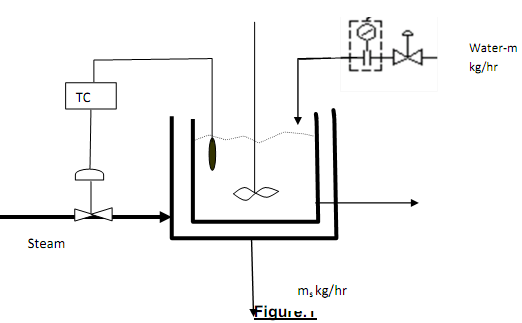Reference no: EM13545951
Automatic control and its application to the chemical process industries are very important as dynamic behavior of processes and processing equipment to be understood and analyzed properly. More advanced control systems are being introduced in process industries for enabling improvements in productivity and product quality. Prepare a brief report on following systems relevant to process control.
a-Cascade control is often used for the control of chemical reactors. With an annotated block diagram, explain the cascade control system used for a jacketed reactor.
b- Explain basic approach and methods for selecting control strategies for the application of distillation column
c-With an annotated block diagram explain application of feed-forward control system for a simple furnace system. Why the feed forward system is important when disturbance affects a process
d- Heat exchangers are very important system in a process plant. Explain dynamics and control of steam heated exchanger.
e-Chemical reactors are often the most difficult units to control in a chemical plant, but considered to be an important system. Explain briefly control of stirred reactors.
Q2 A two capacity process tank is to be analyzed using proportional and integral controllers. A process could be a steam jacketed kettle as shown in Figure.
1. Water is heated continuously by the steam flow and it is proposed to use a controller to regulate the steam flow. The steam flow is essentially depending upon to the valve opening which is controlled by TC. The temperature of the water in the kettle is measured using a RTD sensor and transmitted to the controller.

Analysis & Design aspect:
1. Assume appropriate time constants and other design parameters.
2. Study the possible step response of the system with proportional(P), and integral(I) controllers.
3. Evaluate the stability using Rouths Hurwartz criterion and obtain the range of K value for the stability under various controllers.
4. Evaluate the relative stability of the system with P and I controllers.
5. Make recommendations for the overall design with various time constant and design parameters.
|
The pressure fluctuation of sound waves
: The pressure fluctuation of sound waves at the closed end of a pipe vibrating at resonance is: 1. Minimum 2. 1/2 minimum 3. unchanged 4. maximum 5. 1/2 maximum
|
|
Explain papaverine hydrochloride is a weak acid
: Papaverine hydrochloride (C20H21NO4HCl) is a weak acid. It is used in medicine as a muscle relaxant. A 0.205 M solution of papaverine hydrochloride has a pH = 3.31. Find the Ka of papaverine hydrochloride.
|
|
Evaluate the initial energy of the system
: A string is wrapped tightly around the circumference of a wheel with a mass of 1.23 kg and a radius of 0.324 m. What is the initial energy of the system
|
|
What is direction of childs velocity just before collision
: A 50 kg man is ice-skating due north with a velocity of 6.0 m/s when he collides with a 32 kg child. The man and child stay together and have a velocity of 3.0 m/s at an angle of 35° north of due east immediately after the collision.
|
|
Evaluate the relative stability of the system
: Evaluate the stability using Rouths Hurwartz criterion and obtain the range of K value for the stability under various controllers and evaluate the relative stability of the system with P and I controllers.
|
|
Estimate its linear speed at the end of the fall
: In 1993 a giant 400-kg yo-yo with a radius of 1.5 m was dropped from a crane at height of 57 m, estimate its linear speed at the end of the fall
|
|
A solution of methylamine is titrated with hydrochloric acid
: A beaker containing 20mL of a 0.200 M solution of methylamine (CH3NH2) is titrated with hydrochloric acid (HCl, 0.200 M). Find the pH when the following quantities of HCl solution have been added.
|
|
Evaluate the change in electric potential
: The potential energy of a +1 10-6 C charge decreases from 0.06 J to 0.02 J when it is moved from point A to point B. What is the change in electric potential between these two points
|
|
What is the received sound frequency
: A bat at rest sends out ultrasonic sound waves at 52.3 kHz and receives them returned from an object moving directly away from it at 29.7 m/s. What is the received sound frequency
|